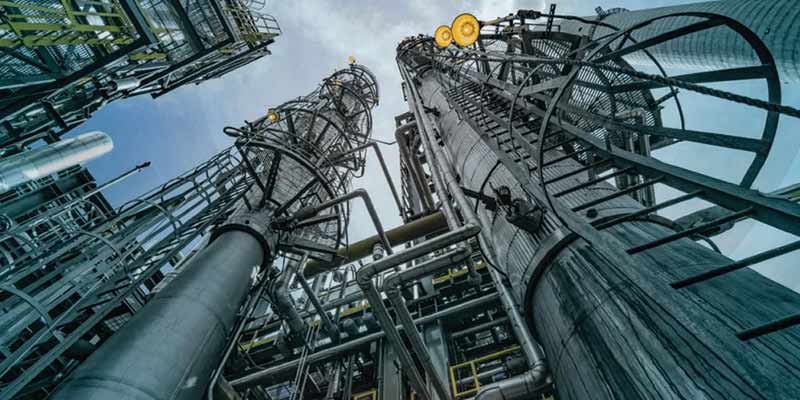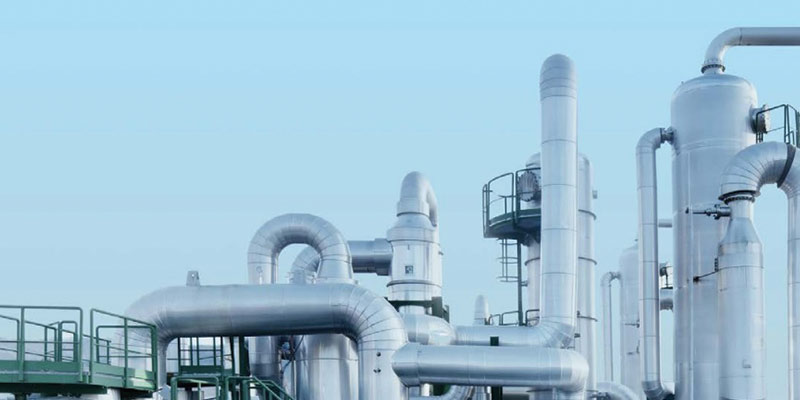- India
- Jul 10
Explainer - Carbon Capture, Utilisation, and Storage (CCUS)
• The 25th meeting of Prime Minister’s Science, Technology & Innovation Advisory Council (PM-STIAC) brought together key government officials and industry players to discuss robust policy formulation for effective Carbon Capture, Utilisation, and Storage (CCUS) in India.
• They discussed the reports prepared by inter-ministerial technical committees constituted by NITI Aayog’s Advisory Committee on developing a policy framework for implementing CCUS initiatives in India.
• India is the third largest emitter of carbon dioxide (CO2) in the world after China and the US.
• India has set a target to achieve a 45 per cent reduction in emission intensity by 2030 and is aiming for Net Zero by 2070.
• This makes CCUS one of the important measures to achieve decarbonisation from the hard-to-abate sectors.
What is Carbon Capture, Utilisation and Storage (CCUS)?
• CCUS involves the capture of carbon dioxide (CO2) emissions from fossil power generation and industrial processes for storage deep underground or re-use.
• If not being used on-site, the captured CO2 is compressed and transported by pipeline, ship, rail or truck to be used in a range of applications, or injected into deep geological formations such as depleted oil and gas reservoirs or saline aquifers.
• It can tackle emissions in hard-to-abate sectors, particularly heavy industries like cement, steel or chemicals.
• CCUS is an enabler of least-cost low-carbon hydrogen production, which can support the decarbonisation of other parts of the energy system, such as industry, trucks and ships.
• CCUS also includes Direct Air Capture (DAC), which involves the capture of CO2 directly from the atmosphere.
• The first CCUS projects started in the 1970s and 1980s in Texas for capturing CO2 from natural gas processing plants and supplying it to local oil producers for utilising the CO2 for enhanced oil recovery. Since then, CCUS has spread to other regions and countries.
• Given the scale of global CO2 emissions, CCUS needs to significantly scale up in an accelerated time frame to make a meaningful contribution to global decarbonisation.
Decarbonisation challenge for India
• India’s per capita CO2 emissions are about 1.9 tonnes per annum, which is less than 40 per cent of the global average and about one-fourth of that of China. However, with rapid economic growth, infrastructure and industrial development, as well as a growing population, the total CO2 emissions is expected to cross 4 gigatonne per annum (gtpa) by the year 2030.
• The sectoral break-up of the CO2 emissions reveals that while renewable energy is making great strides in India, it can theoretically contribute at most 30 per cent of the desired decarbonisation by replacing fossil fuel-based power generation.
• The decarbonisation challenge for India is to identify scalable and economically sustainable solutions for the decarbonisation of sectors that contribute to 70 per cent of emissions.
• India’s power and industrial sectors contributed around 1,600 mtpa of CO2 emissions (around 60 per cent) out of the total emissions of 2,600 mtpa in 2020.
• The remaining 40 per cent of emissions come from distributed point emissions sources like agriculture, transport, and buildings which are not amenable for CCUS.
• Fuelled by economic growth across sectors as well as rapid urbanisation, emissions from these sectors are expected to increase to nearly 2,300 mtpa by the year 2030, thus making their capture and abatement critical.
• CCUS has an important and critical role to play, especially for India to accomplish Net Zero by 2070.
Decarbonisation through CCUS
CCUS can contribute to decarbonisation and transition to clean energy systems in various ways:
1) Hard-to-abate sectors: CCUS offers the only known technology for the decarbonisation of hard-to-electrify CO2 intensive sectors such as steel, cement, oil & gas, petrochemicals & chemicals, and fertilizers. These sectors are important to the continued growth of the Indian economy and for ensuring energy, materials and food security. The maturity of technology development in these sectors portends the continued use of fossil fuels and concomitant CO2 emissions from these sectors in the foreseeable future, thus making CCUS critical in these sectors.
2) Low carbon hydrogen economy: CCUS is expected to play a major role in enabling the hydrogen economy in India, through the production of blue hydrogen based on the utilisation of our rich endowments of coal. Given the current cost structure of green hydrogen of $5-6/kg, cost competitive blue hydrogen production (i.e. coal gasification based hydrogen production coupled with CCUS) at around $2/kg can provide a pathway for the hydrogen economy in the future.
3) Removal of the CO2 stock from the atmosphere: The race towards Net Zero and containing global temperature within 1.5°C from pre-industrial levels is not possible without the removal of excess CO2 from the atmosphere through Direct Air Capture (DAC). DAC plants are in operation at a small scale, due to their prohibitively high cost of operations. With technological innovation and focused policy interventions, CCUS through DAC applications is also expected to have a role in the Net Zero transition journey.
4) Sustenance of existing emitters: Existing thermal power plants and industrial plants (such as steel and cement production facilities) can be retro-fitted with CO2 capture infrastructure. Nearly two-thirds of India’s 210 GW of coal-based power capacity and 144 mtpa crude steel capacity have an age of less than 15 years and cannot be just wished away or stranded and need to be made sustainable through the application of CCUS. Significant economic costs and damages can be avoided by ensuring the sustenance of existing emitters through the implementation of CCUS.
Challenges to the growth of CCUS
1) Economics of CCUS: The cost of carbon capture is high, especially in the case of post-combustion CO2 capture from CO2 lean flue gases. Due to the high cost of capture, the overall CO2 abatement cost on a per tonne or per unit of the saleable product basis is significant for commodities such as steel, cement, power and oil & gas, which have very competitive end-use markets. Whilst costs are expected to fall with the increasing scale of deployment and technology development, enabling policies in terms of CCUS credits or preferential procurement for carbon-abated products are needed to incentivise investments in CCUS.
2) Absence of downstream CO2 infrastructure: Downstream infrastructure for transportation and storage is very nascent, thus requiring emitters to invest not only in capture technologies but also across the entire CCUS value chain. There is a need for policy measures to drive the formation of CCUS clusters with large-scale CO2 storage sites, with emitters and storage sites being connected through adequately provisioned and shared transport infrastructure. The upfront creation of such downstream infrastructure reduces the risk and costs for new emitters joining the cluster.
3) CO2 utilisation technologies: CO2 utilisation technologies are relatively less developed compared to capture technologies and require significant subsidy/market premium to compete with established fossil fuel based production routes. However, it is expected that as CO2 utilisation technologies develop and learning curve effects set in, costs can come down significantly and new industries around carbon utilisation will also develop. In particular, for the conversion and utilisation of CO2 to new building materials, there is a requirement for process standardisation and defining new standards and specifications.
4) Lack of pore space and natural resources mapping: Whilst various CO2 utilisation technologies are in development, CCUS at scale is only possible through the geological storage of CO2. There is a need to focus and invest in pore space mapping to characterise promising CO2 storage regions and basins.
5) Risk management: There is a need to define robust monitoring, verification & accounting (MVA) and risk management frameworks so that risks and liabilities across the CCUS value chain & project life cycle are managed and limited for participants.
The way ahead
• Presently carbon capture in India is confined to certain industries/applications where the carbon capture is part of the process — the manufacture of urea. India’s urea production is about 24 mtpa, where capture CO2 is utilised in the ammonia to urea conversion process.
• CO2 is also captured as part of the gas conditioning process in the gasifiers in Jamnagar (10 mtpa of petcoke gasification capacity) and in Angul (2 mtpa of coal gasification capacity). However, the CO2 is largely released to the atmosphere and not utilised or stored.
• While there are few pilot scale carbon capture projects, there are no commercial-scale dedicated CCUS projects in India.
• While the sustainability of operations and carbon footprint is a major concern for the promoters and top management of most industries, the main impediments to companies investing in CCUS projects are the lack of any policy incentives and framework, lack of a viable or established business model with independent players providing services for the transportation and disposition of CO2 and lack of established pathways & options for the utilisation or storage of CO2 at scale.
• Given India’s climate and CO2 emission reduction commitments, there is a need to design and establish a robust and effective CCUS policy framework to enable projects across the CCUS value chain and at scale for the major industrial sectors of the Indian economy like power, steel, cement, chemicals, and petrochemicals.
Manorama Yearbook app is now available on Google Play Store and iOS App Store



